What Color Flowers Does the Astilbe Produce
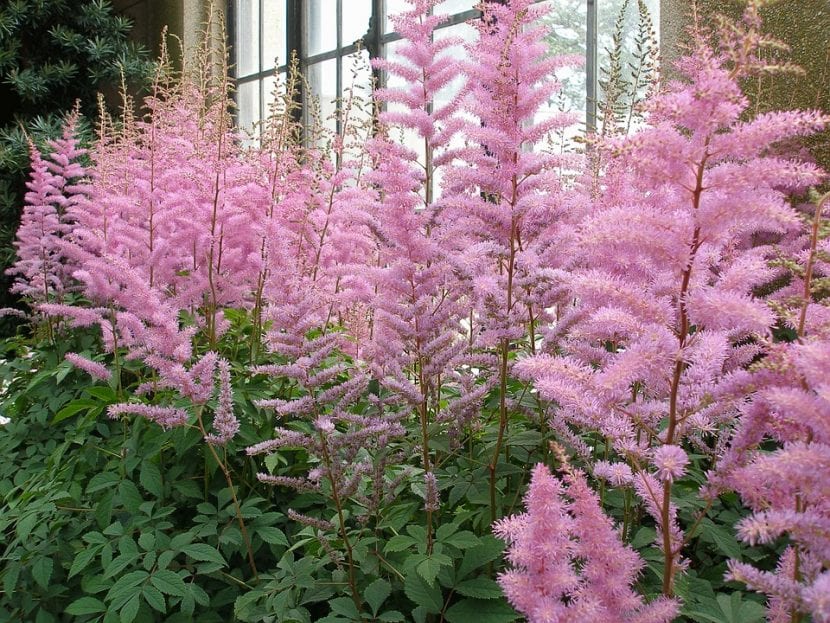
El astilbe It is a plant that produces a large number of flowers that, grouped in inflorescences of a very interesting size, make it a highly cultivated botanical genus, both in pots and planters and directly in gardens.
It does not need complicated maintenance; in fact, it is considered to be suitable for beginners Well, with minimal attention, it will be healthy, as well as beautiful.
Table of Contents
- 1 Origin and characteristics
- 1.1 Main species
- 2 What are their cares?
- 2.1 Locate Us
- 2.2 Earth
- 2.3 Irrigation
- 2.4 Subscriber
- 2.5 Multiplication
- 2.5.1 Seeds
- 2.5.2 Mata Division
- 2.6 Rusticity
- 3 What is the meaning of the Astilbe flower?
- 4 Where to buy?
Origin and characteristics
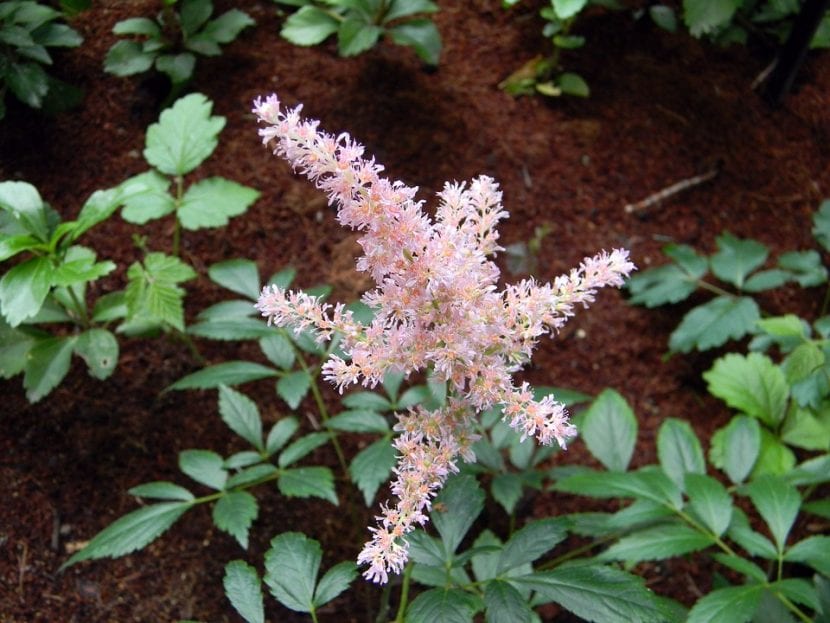
The genus Astilbe is made up of a dozen species native to East and South Asia. Is about perennial or perennial herbaceous plants that grow to a maximum height of one meter, and that produce leaves composed of opposite leaves, with slightly serrated margins, of green color. They bloom in summer, which is when their inflorescences sprout in the form of feather dusters that can be pink, red, white or yellow.
Main species
The most recommended are:
- Astilbe chinensis : Native to Japan and China, it reaches a height of 40 to 50cm and produces pink, purple or white flowers.
- Astilbe japonica : known as Japanese astilbe, it is native to Japan that reaches a height of about 50cm. It produces red, pink or white flowers.
- Astilbe rubra Native to China, Japan and Korea, it reaches a height of 70 centimeters and produces magenta colored flowers.
- Astilbe thunbergii : It is native to Japan and China, reaches a height of up to 1 meter, and produces pink or reddish flowers.
What are their cares?
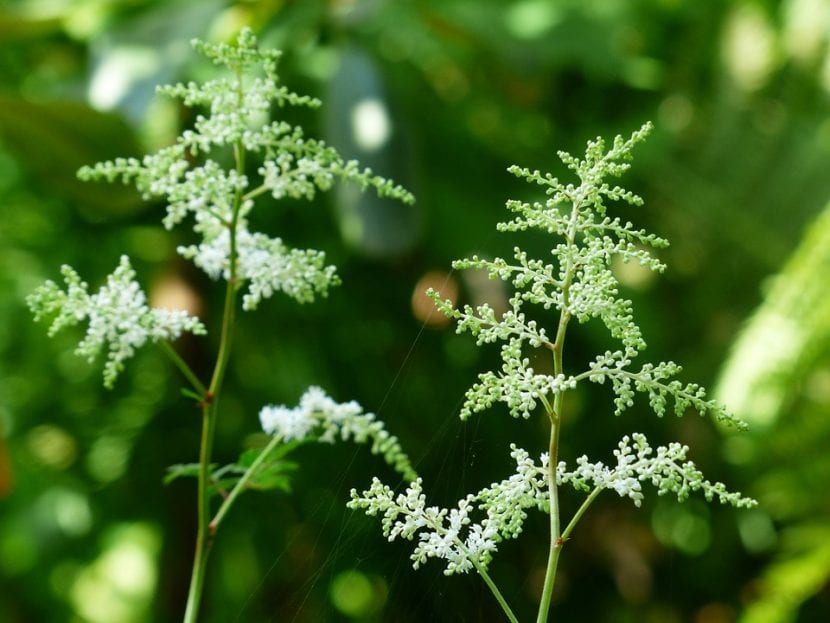
Would you like to know how to take care of it? So here are a few tips 🙂:
Locate Us
The Astilbe is a plant that has to be in a bright area but without direct sun. It adapts very well to places with partial shade.
Of course, it must be placed outside, because inside the home its flowering would be scarce or even non-existent.
Earth
It depends on where it is going to be grown 🙂:
- Flower pot: it is important that the substrate to be used is capable of retaining moisture for a time but also has good drainage. The fact is that Astilbe does not withstand drought, but neither does it like to have "wet feet" permanently. Therefore, a good mix would be, for example, universal growing medium (like this one they sell here!) with 30% perlite (for sale here!).
- Outdoor: With garden soil, the same must be taken into account as with potting soil. Drainage is essential so that the roots do not have problems. But if your soil is very compact, do not worry: make a planting hole of about 30cm x 30cm (better if they are 50 × 50), cover it with shading mesh (on sale here!) and then fill it with the substrate mentioned above.
Irrigation
Irrigation is another topic to talk about, and a pretty serious one indeed; not in vain, water is essential for life. But beware: not by adding more will he be more alive; in fact, what often happens when overwatering is that the roots suffocate and die. Bearing this in mind, to avoid problems you have to put a substrate or soil with good drainage, but you also have to know when to water.
Three times per week? A? Well, I'm very sorry to tell you this but the answer is… it depends. It depends a lot on the climate and the location of the plant. In general terms, it is watered much more in summer than in winterbecause the temperatures are higher and the land dries faster. But this is not always the case.
If you live in an area where it rains regularly, you won't have to spend as much time on this task. For this, the most advisable thing is to always check the humidity of the earth, either by introducing a thin wooden stick (if it comes out practically clean when you extract it, you will have to take the shower and fill it with water).
Use rainwater or lime-free water whenever you can. In the event that you cannot get it, fill a basin with the one from the tap, and let it sit for a minimum of night so that the heavy metals "sink", stay down completely. Then you will only have to take the water from the upper half of the container, without making too sudden movements.
Subscriber
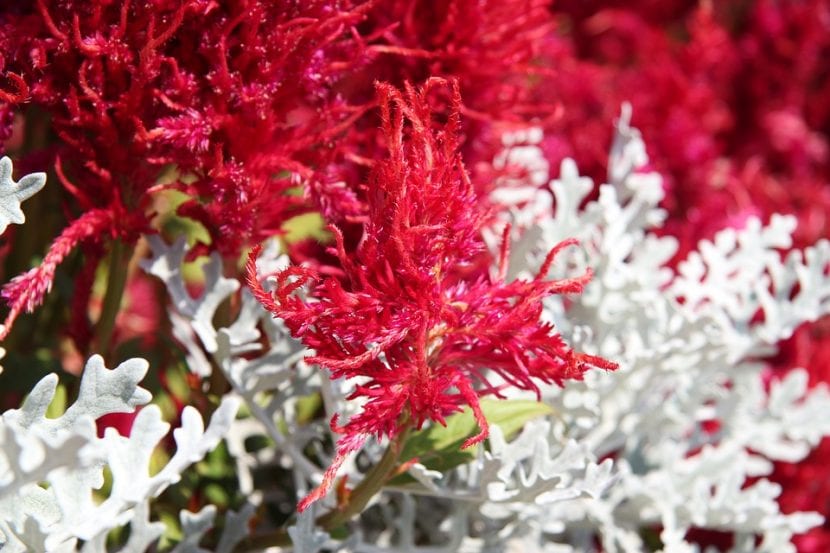
In spring and summer It is highly advisable to fertilize your Astilbe with fertilizers such as guano in its liquid form (for sale here!) if it is in a pot or planter, or with others such as compost, worm castings (for sale here!), or manure from herbivorous animals.
Multiplication
It multiplies by seeds in summer or division of plants in spring or autumn. Let's see how to proceed in each case:
Seeds
- First, you have to put them in a glass of water for 24 hours.
- The next day, discard any that have been floating since they most likely will not germinate.
- Then fill a seedling tray (get it here!) with universal culture substrate mixed with 30% perlite.
- Next, plant a maximum of two seeds in each socket, and cover them with a thin layer of substrate.
- Finally, water conscientiously.
Placing the tray outside, in semi-shade, and keeping the substrate always moist but not flooded, the seeds will germinate in a month.
Mata Division
To divide the bush you have to:
- If it is potted:
- Extract it from her.
- With a serrated knife or handsaw previously disinfected with pharmacy alcohol, fearlessly cut in half (vertically, from the surface of the earth down).
- Plant the chunk in another pot or in the ground.
- Water (both).
- If you are on land:
- Make 2-3 trenches around the plant about 40cm deep.
- Cut with a serrated knife and saw in half.
- With a hoe, separate the piece you want, making sure it comes out with the root.
- Plant it somewhere else.
- Water.
Rusticity
The Astilbe it resists frosts down to -12ºC, although it prefers warm climates, without low temperatures, because with these conditions it usually loses the aerial part (leaves). It also withstands heat of up to 40ºC if the substrate or soil is humid.
What is the meaning of the Astilbe flower?
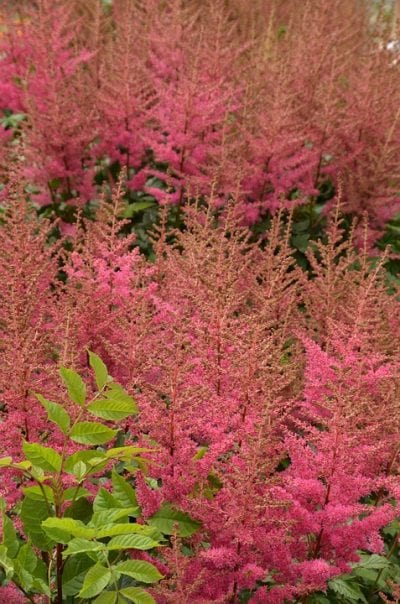
To finish, we are going to end with a curious and beautiful topic at the same time. Humans have a tendency to believe in many things, to put meanings on them, to associate them with experiences, and so on.
The Astilbe flower has had something really positive: is the representation of hope. Perhaps that is why it is used so much in bridal bouquets ... or for homes.
Where to buy?
You can buy Astilbe in nurseries, but also here:
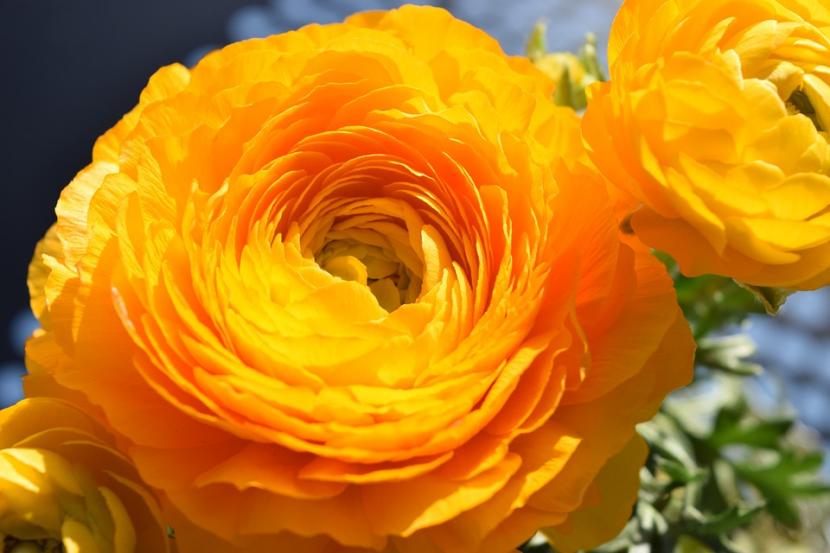
Related article:
The best flowers for spring and summer
The content of the article adheres to our principles of editorial ethics. To report an error click here!.
What Color Flowers Does the Astilbe Produce
Source: https://www.jardineriaon.com/en/astilbe.html
0 Response to "What Color Flowers Does the Astilbe Produce"
Post a Comment